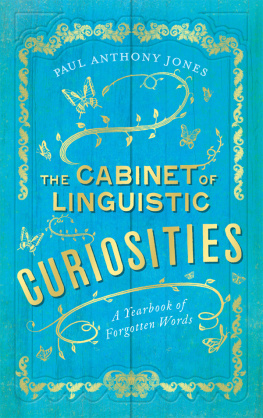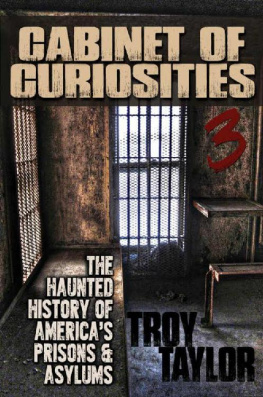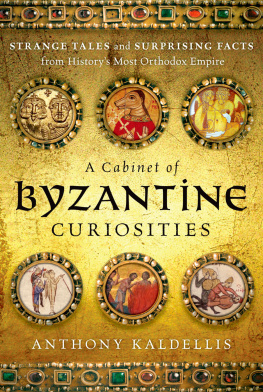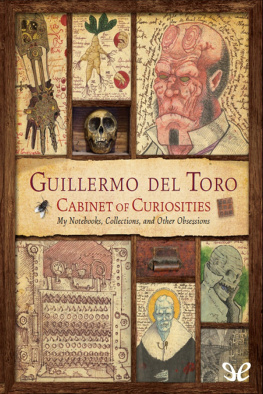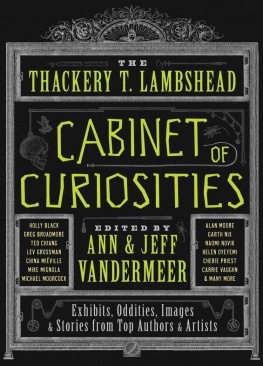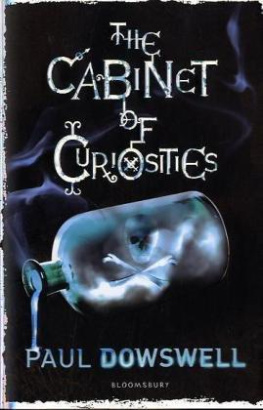Gordon Grice - Cabinet of Curiosities
Here you can read online Gordon Grice - Cabinet of Curiosities full text of the book (entire story) in english for free. Download pdf and epub, get meaning, cover and reviews about this ebook. year: 2015, publisher: Workman Publishing Company, genre: Detective and thriller. Description of the work, (preface) as well as reviews are available. Best literature library LitArk.com created for fans of good reading and offers a wide selection of genres:
Romance novel
Science fiction
Adventure
Detective
Science
History
Home and family
Prose
Art
Politics
Computer
Non-fiction
Religion
Business
Children
Humor
Choose a favorite category and find really read worthwhile books. Enjoy immersion in the world of imagination, feel the emotions of the characters or learn something new for yourself, make an fascinating discovery.

- Book:Cabinet of Curiosities
- Author:
- Publisher:Workman Publishing Company
- Genre:
- Year:2015
- Rating:3 / 5
- Favourites:Add to favourites
- Your mark:
- 60
- 1
- 2
- 3
- 4
- 5
Cabinet of Curiosities: summary, description and annotation
We offer to read an annotation, description, summary or preface (depends on what the author of the book "Cabinet of Curiosities" wrote himself). If you haven't found the necessary information about the book — write in the comments, we will try to find it.
Cabinet of Curiosities — read online for free the complete book (whole text) full work
Below is the text of the book, divided by pages. System saving the place of the last page read, allows you to conveniently read the book "Cabinet of Curiosities" online for free, without having to search again every time where you left off. Put a bookmark, and you can go to the page where you finished reading at any time.
Font size:
Interval:
Bookmark:
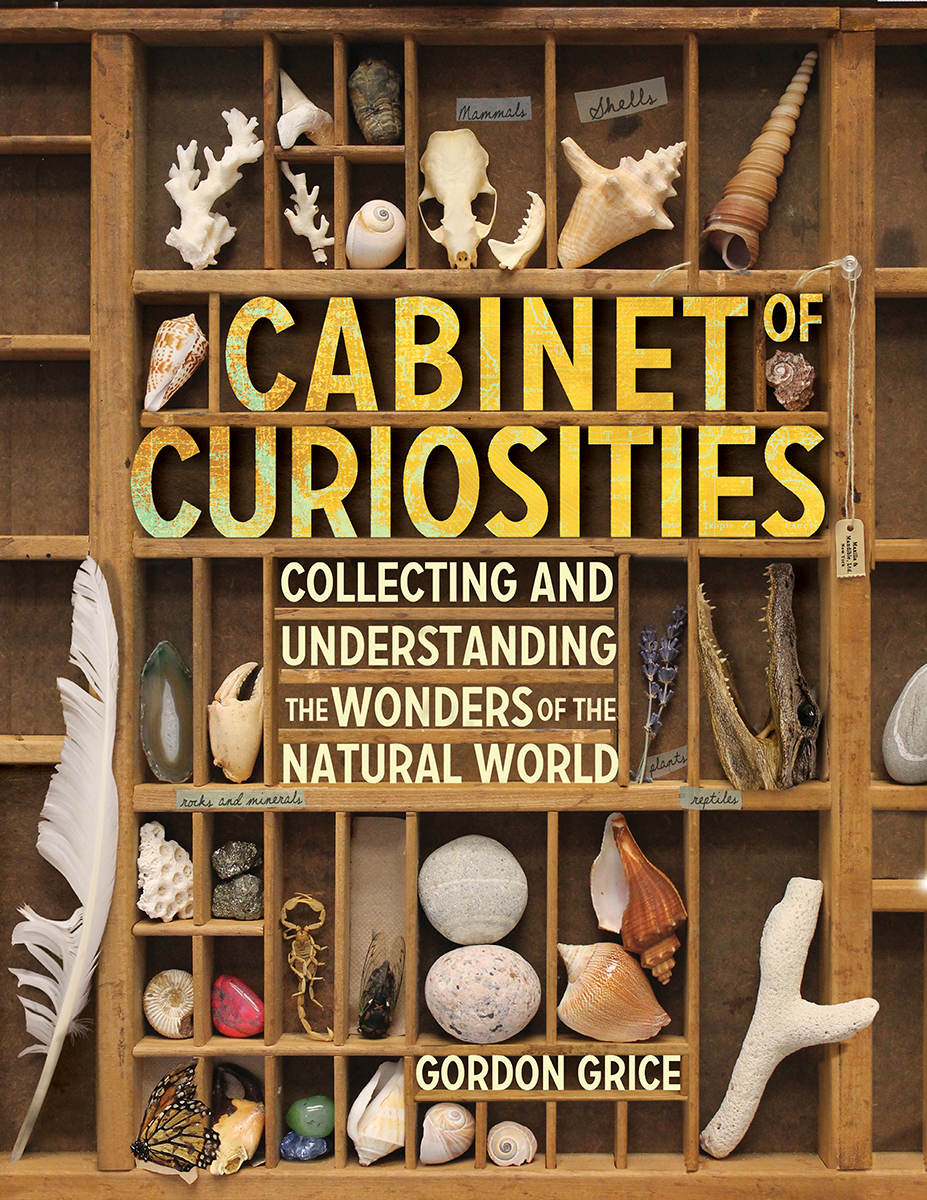
Cabinet of Curiosities
Collecting And Understanding The Wonders of The Natural World
Gordon Grice
Workman PublishingNew York
For Tracy, Parker, Beckett, Griffin, and Abby
Contents
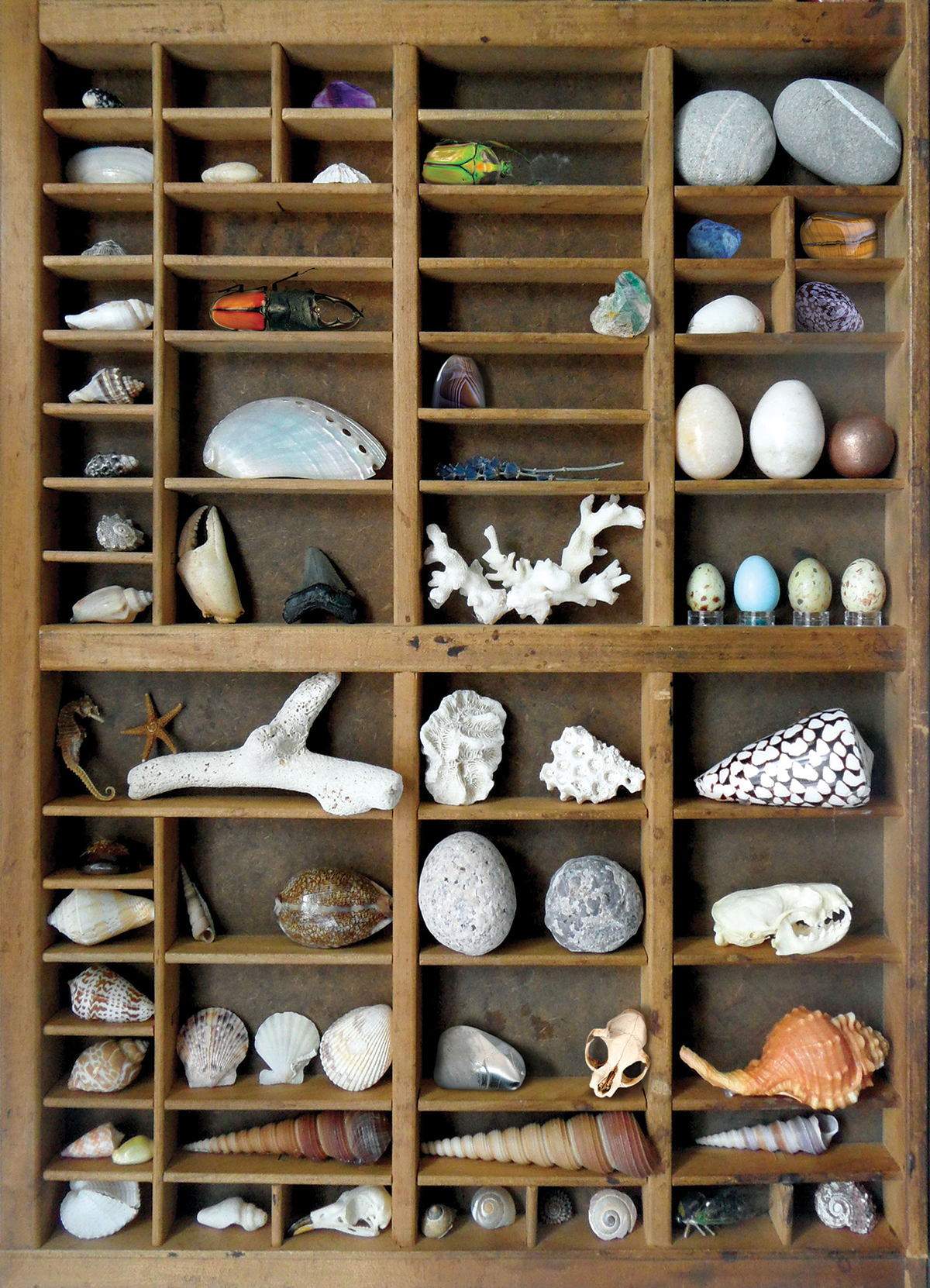
INTRODUCTION
MY FIRST CABINET
When I was about six, I started my first cabinet of curiosities. The first thing I put in it was a skunks skull I found in our backyard. The skull fit perfectly in my palm. It had sharp little teeth. I was surprised to notice that they looked like my dogs, with long, jagged canines on the sides. Without its lips, the skull seemed stuck in a snarl. Fur still clung to itblack with a stripe of white down the forehead.
I put the skull in a red cigar box my dad gave me. The box was made of sturdy cardboard with a hinged lid. I was soon using it to collect all sorts of things I found outdoors, from old coins to corncobs.
Over the years I found many items to add to my cigar box. One day our dogs came home with porcupine quills stuck in their mouths and snouts. They had fought a porcupine and lost. My dad pulled the quills out with pliers and gave them to me. They were about the size of toothpicks. The stuff they were made of felt like fingernails. Into my cigar box they went. Another time, my sister and I found some wooden seed pods called devils claws. Into the box they went. When my pet tarantula died, into the box he went.
That cigar box became my first cabinet of curiosities. I didnt call it that at the time. I only learned that term later.
The word cabinet itself was probably derived from the Latin word cavea. These were the underground stalls in which the animals that would be fighting against gladiators were kept.
The Age of Exploration
People have been keeping collections like the one I started in my cigar box for more than two thousand years. In ancient times, collections of curiosities were kept in temples. In the city of Carthage, for example, the temple for the goddess Astarte was said to house many strange things for people to look ateven the skin of a chimpanzee. A whalebone was displayed in the temple of Asclepius in Sicyon, and a temple in Naples kept an elephant skull. In ancient Rome, temples held vast collections of curiosities from all over the empire, plus paintings, sculptures, jewelry, and books. (In those days, books were rare and extremely valuable.)
It wasnt until much later that collections started to be kept in special cabinets. Nowadays, we think of cabinets as pieces of furniture. Kitchen cabinets. Toy cabinets. Storage cabinets. Basically, any piece of furniture that has shelves, or drawers, and maybe doors is called a cabinet. But the word cabinet goes back to the Middle Ages. In France, a cabinet was a small room. In time it came to mean any place where things are stored, and it could be as small as my cigar box or as big as a house. In fact, some cabinets took up several buildingsand were the basis of what later became known as museums.
Cabinets started becoming really popular during the the Age of Exploration. This was a time between the early 1400s and the late 1600s when people from Europe began sailing to other places in the world, such as Africa, Asia, Australia, the Pacific Islands, and the Americas. They went to these places to make money and discover new things. In a way, the term Age of Exploration is misleading. All of those places had already been explored by the people who lived there. But the places were new to Europeans.
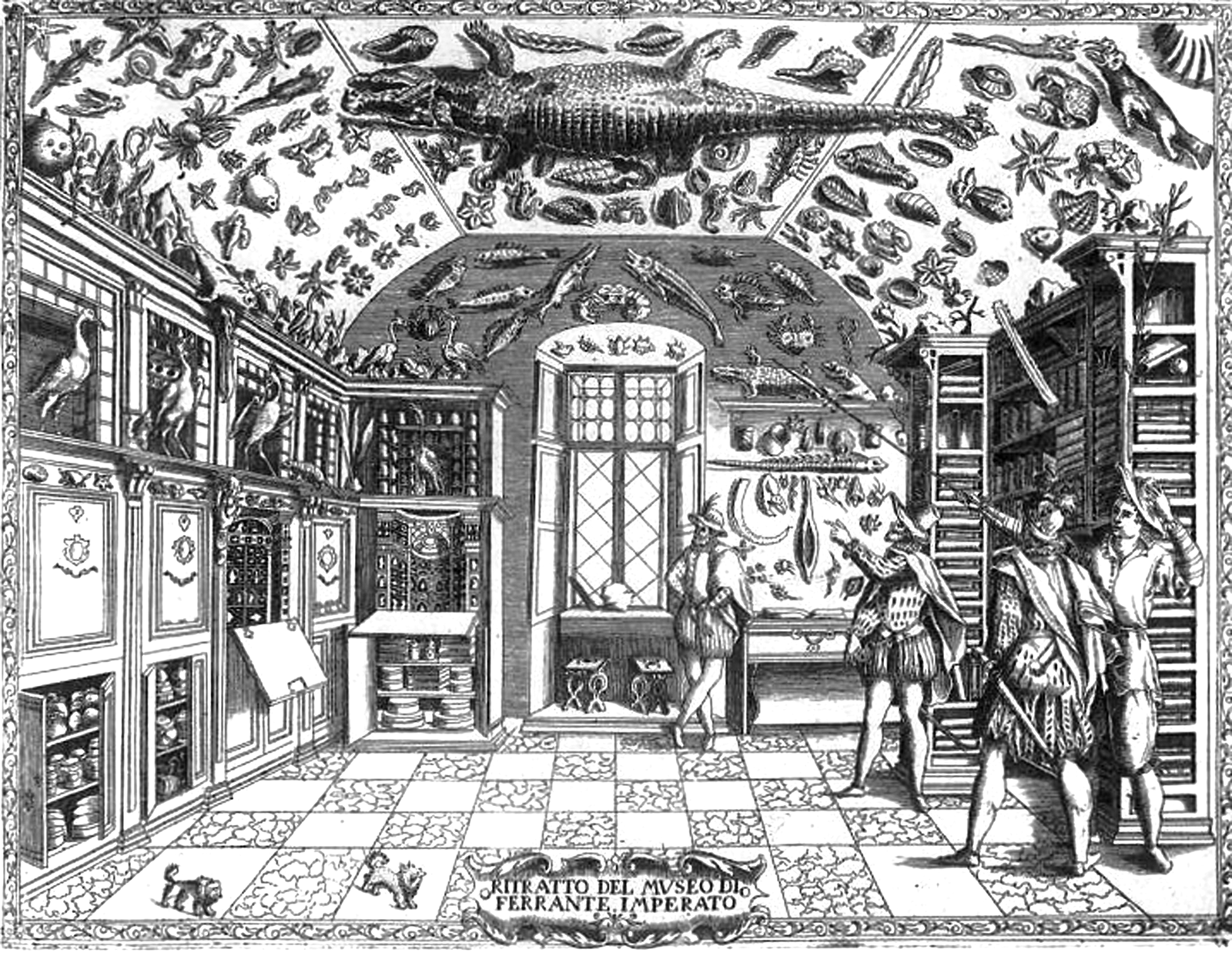
This engraving from Ferrante Imperatos Dellhistoria naturale (Naples, 1599) depicts one of the earliest known natural history collections in Europe.
The Europeans brought back valuable things, like gold, silver, and spices. They also brought back things they found curious, like animals and plants they had never seen before, rocks and gemstones, fossils, and bones. Some Europeans, especially wealthy ones, collected these rare finds and built cabinets to hold them. Their main purpose was to not only catalog the strange and exotic wonders of the world, but to learn about the earth and be able to show other people what theyd learned.
Those old-time cabinets held many things: human heads and horseshoe nails, sheet music and meteorites, stuffed birds and animal skins, fruits, seeds, tools, and more. The collection of Rudolf II was said to have a stuffed dodo bird. Another collection had an ostrich egg. A third had the skull of the collectors favorite composer. These cabinets could house dozens or hundreds of curiosities, depending on how big they wereand some got very big. A powerful prince named William of Orange had a huge cabinet of curiosities. He even kept a live orangutan in it!
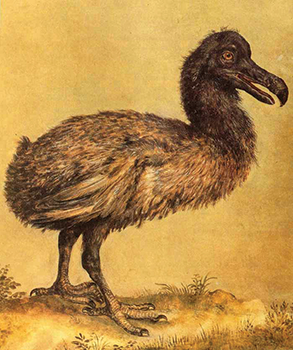
Jacob Hoefnagel, the court painter in Prague from 1602 to 1613, rendered this likeness of a dodo bird said to be preserved in Rudolf IIs collection.The dodo bird is now extinct.
Kings, popes, and other powerful people tried to get as many curiosities as they could. Sometimes they hired ship captains to bring back interesting things from the lands they visited. In that way, they collected not just strange animals and plants, but also things dug up from the earth: fossils, gems, interesting rocks. They also found items made by native peoples in those distant regions. Bowls, arrowheads, sewing needles made of bone. These man-made curiosities, whether they came from newly discovered tribes in America or nomads in Africa, were highly sought after and often hard-won. Treasure hunters abounded, looking not only for gold and silver, but also for rare artifacts to sell to wealthy collectors.
Some people were dishonest. Instead of finding or buying weird animals, they made fake ones and pretended they were real. For example, they would sew together parts of a monkey and a fish to make a mermaid. They would glue fake parts onto a dead rat and call it a baby dragon. They would make a basilisk (a monster from old myths that could kill you by just breathing on you) by sewing claws and a snake tongue into a dead stingray. Collectors believed they were really seeing these monsters!
Sometimes people werent trying to fake anything. They just misunderstood what they had. For example, in the late 1500s, a king named Ferdinand of Habsburg was said to have the bones of genuine giants in his cabinet. People really believed that a gigantic race of humans had once walked the earth, and that a huge flood had killed them all. But the bones in Ferdinand of Habsburgs cabinet were not giant human bones at all. They were really dinosaur bones.
Much of what we know about the natural world came from cabinets of curiosities. Take fossils, for example. When people started digging up thousands of fossils for cabinets, they discovered something important: The different layers of earth hold different kinds of fossils. People found modern-looking plants and seashells at one level. At a deeper level, they found different species of plants and different kinds of shells. This insight eventually led scientists to grasp that the earth is billions of years old. They realized that deeper layers are older and contain older animals and plants. They can look at layers 70 million years old and find the bones of dinosaurs like T. rex and triceratops. We can look at deeper layers from 150 million years ago and discover the bones of stegosaurus and apatosaurus. They now know that the earth is still evolving today.
Next pageFont size:
Interval:
Bookmark:
Similar books «Cabinet of Curiosities»
Look at similar books to Cabinet of Curiosities. We have selected literature similar in name and meaning in the hope of providing readers with more options to find new, interesting, not yet read works.
Discussion, reviews of the book Cabinet of Curiosities and just readers' own opinions. Leave your comments, write what you think about the work, its meaning or the main characters. Specify what exactly you liked and what you didn't like, and why you think so.


